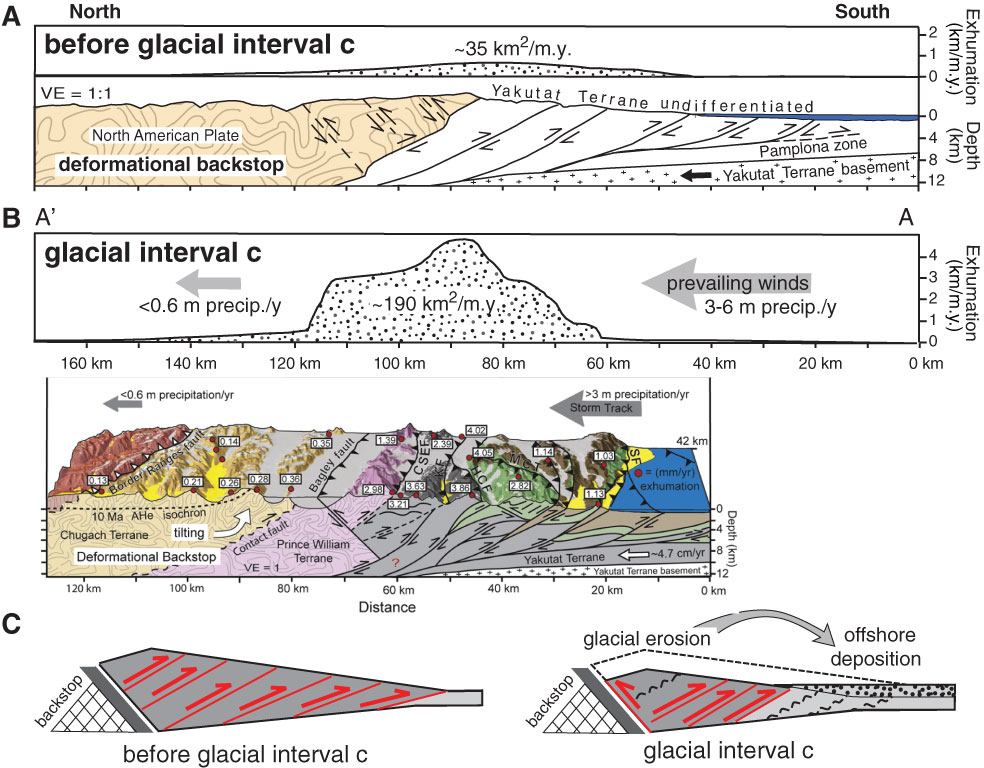
Figure F6. Proposed model of climate-related influences on orogen kinematics. A. Exhumational flux based on thermochronometry and architecture of the orogen prior to onset of glacial interval C, drawn along line A-A′ (Fig. F4) based on thermochronometry (Berger et al., 2008b; Spotila and Berger, 2010) and geologic data (Plafker et al., 1994; Bruhn et al., 2004). B. Exhumational flux based on thermochronometry and architecture of the orogen after the onset of glacial interval C. C. Interpretative model of the effect of glacial erosion and deposition on the St. Elias critical wedge. Before glacial interval C (left), the critical Coulomb wedge is wider and has greater relief. After the intensification of glaciation (right), increased glacial erosion and offshore deposition reduced relief, concentrated deformation, required enhanced back thrusting, and forced the termination of foreland structures, thereby narrowing the wedge. For A, B, and C, straight dashed lines depict structures with only minor amounts of slip and wavy dashed lines depict inactive structures. Gray, green, and brown strata along windward site reflect Kultieth, Poul Creek, and Yakataga Formations, respectively. Modified from Berger et al. (2008a, 2008b).
